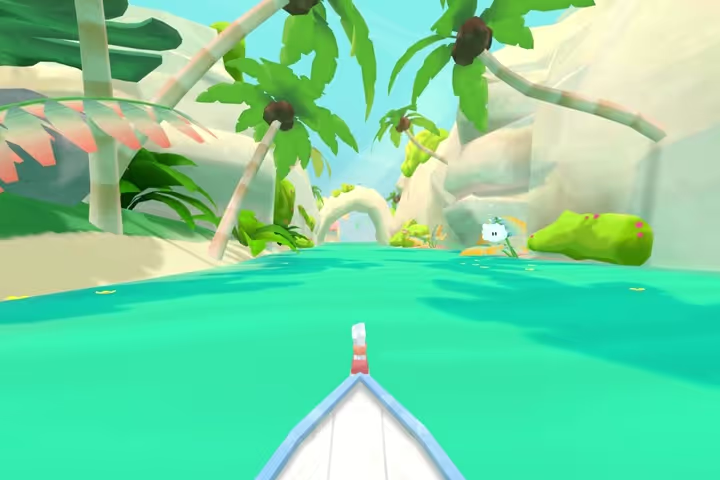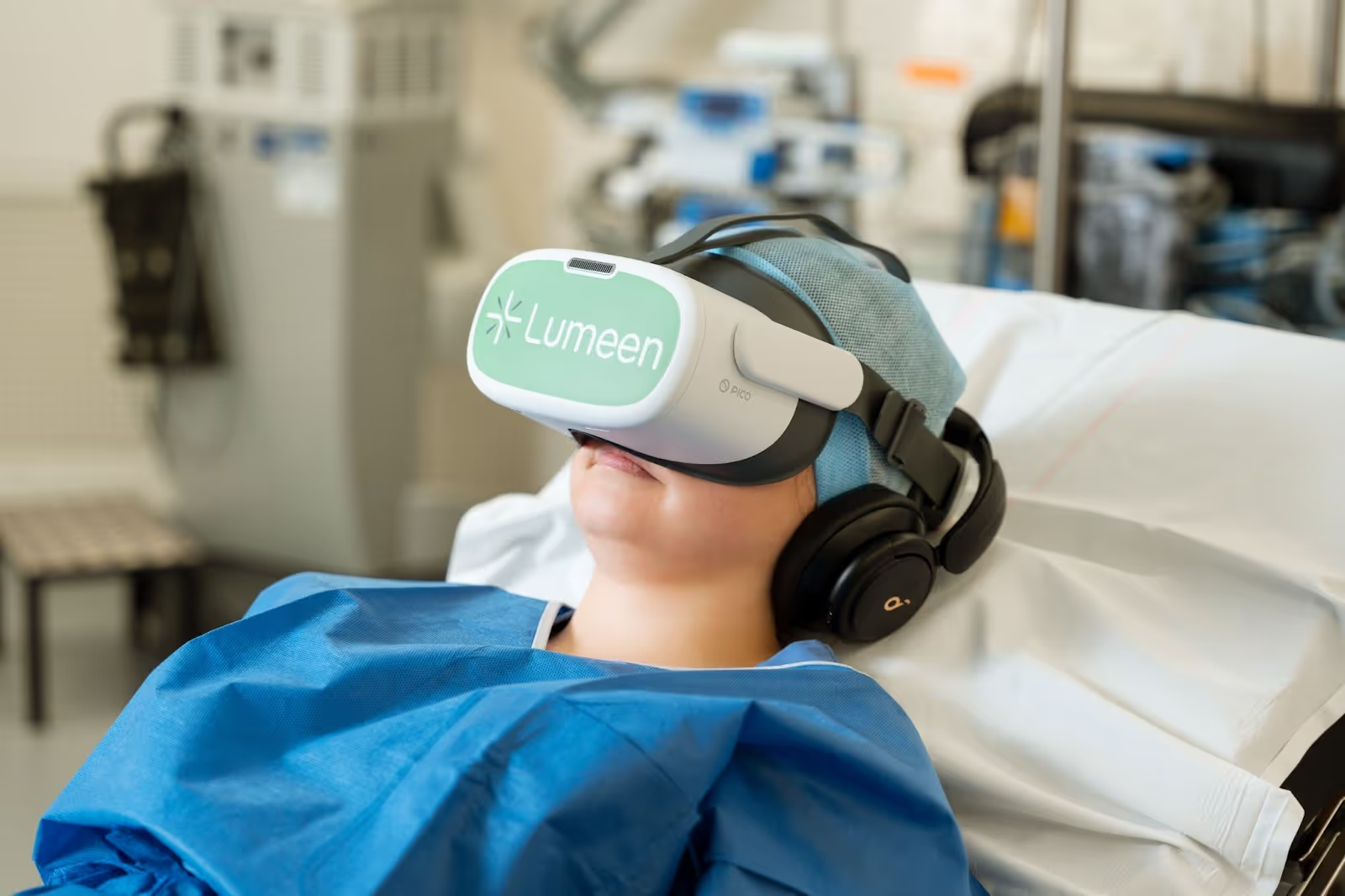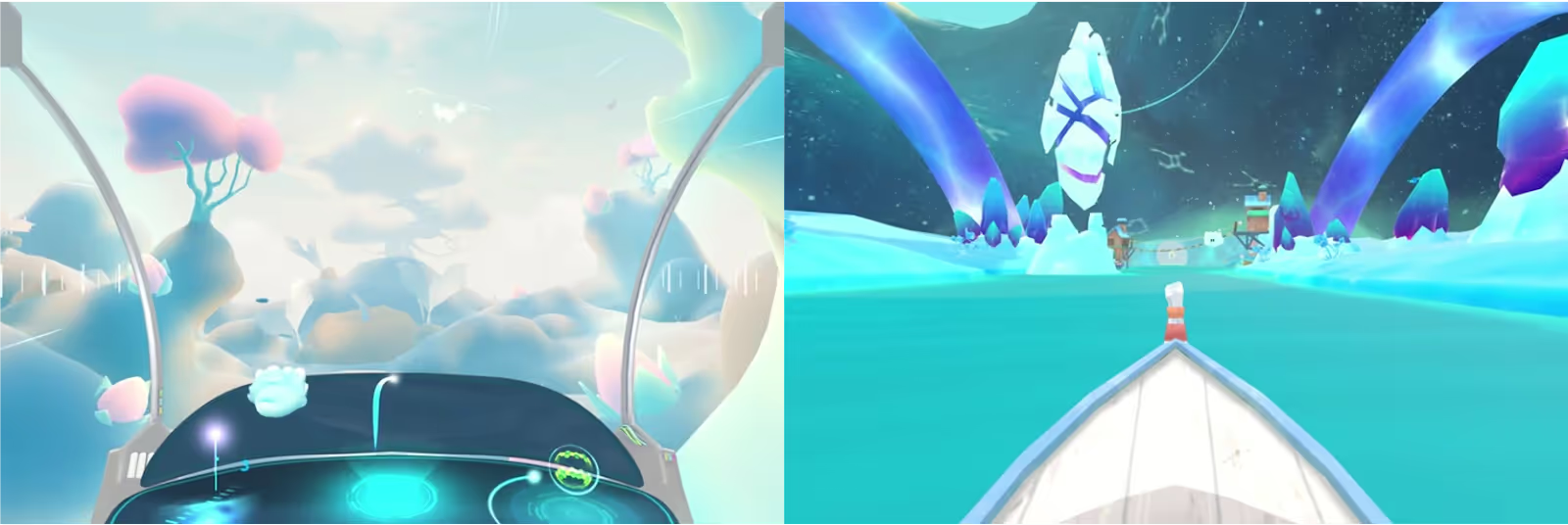Virtual reality and medical hypnosis: a winning combination for health
%25201.avif)
After discussing the principles of medical hypnosis in a Previous article, we will now explore how this practice can benefit from advances in virtual reality.
The principle of hypnotic virtual reality is to use virtual reality headsets to create an immersive environment conducive to the state of hypnosis. The patient is immersed in a virtual world designed to stimulate visualization, induce deep relaxation and promote increased concentration. Hypnotic suggestions are then integrated into this environment, guiding the user to an altered state of consciousness.
The benefits of virtual reality and hypnosis for the patient
Virtual reality hypnosis sessions are often perceived as more engaging and pleasant, which allowsimproving the patient experience by strengthening their adherence to the hypnosis protocol as well as their overall satisfaction. By making the hypnosis session more fun, virtual reality can, among other things, facilitate membership patients who may be reluctant or unable to participate in traditional hypnosis sessions, such as children or people with anxiety.

Thanks to virtual reality, hypnotic scenes come to life in the form of immersive environments. This allows overcome visualization difficulties that some patients may encounter and Strengthen the anchoring of suggestions hypnotics. With the addition of noise-reducing headphones, it is also possible to isolate the patient even more by cutting him off from external sounds, which can be, for example, very useful in the operating room. Virtual reality makes it possible to create safe and controlled therapeutic environments, ideal for any anxiety-provoking situation in a reassuring setting.
The combination of hypnosis and virtual reality in the field of pain and anxiety management is attracting growing interest [1], [2]. Several studies have shown that the combination of these two techniques makes it possible to significantly decrease the intensity of pain, as well as in experimental as well as clinical contexts for the care of acute, chronic and neuropathic pain, in hospital or at home [3], [4], [4], [5], [6], [7].
A study conducted in 2014 compared the effectiveness of hypnoanalgesia and virtual reality in reducing pain in individuals with different levels of hypnotizability [8]. One hundred twenty female students were divided into four groups: a control group, a group using immersive virtual reality (the Snow World game) during painful stimulation, a group receiving a hypnosis session concomitant with the stimulation, and a last group combining preliminary hypnosis and virtual reality. The results showed that the three intervention groups (virtual reality, hypnosis, and a combination of the two) were significantly more effective in reducing pain than the control group. However, the effectiveness of hypnosis varied according to the degree of hypnotizability of the participants: highly hypnotizable people benefited more from this technique. In contrast, virtual reality was found to be effective in reducing pain in all participants, regardless of their level of hypnotizability.

It is important to note that while the results are promising, more research is needed to better understand the mechanisms of action of the combination between medical hypnosis and virtual reality and to identify the patient populations that would benefit the most. In addition, the implementation of standardized protocols is essential to ensure the reproducibility of results and to facilitate the integration of this approach into clinical practices.
The benefits of virtual reality and hypnosis for healthcare institutions
Virtual reality headsets, such as Lumeen, offer caregivers an innovative tool to integrate into their medical hypnosis practice. They can also be combined with other non-drug techniques, such as cardiac coherence or music therapy, in order to offer multimodal non-pharmacological therapies.
This allows democratizing access to medical hypnosis. Indeed, before their appearance, only professionals trained in the practice of medical hypnosis could offer sessions. However, there are not enough trained professionals to meet the needs of all patients. Virtual reality offers an interesting alternative solution: it allows, in less than two minutes, any healthcare provider to offer a medical hypnosis session to their patients.
Virtual reality also makes it possible to standardize hypnosis sessions, guaranteeing a consistent and reproducible quality. Additionally, the hypnotic scripts for the immersive experiences are available in multiple languages, which makes it possible to offer medical hypnosis sessions to international patients.
However, it is essential to note that virtual reality does not replace the expertise of the hypnotherapist in any way. The helmet can even be used prior to the hypnotherapist's intervention.. By creating an immersive environment, the immersive experience facilitates the induction and deepening of the hypnotic state, thus optimizing the effectiveness of the hypnotherapist's intervention. For example, the helmet can be used preoperatively to prepare patients, allowing the healthcare professional to focus on personalized support during the session.
“The virtual reality headset is a springboard for hypnosis, a hyperrelaxed individual is easier to hypnotize, it allows him to be able to condition his breathing well and to be relaxed before the classical hypnosis session.”
Karin Buyst - Hypnotherapist who uses Cayceo experiences (formerly Ipneo)
Moreover, the practice of medical hypnosis requires sustained concentration on the part of the hypnotherapist, which induces fatigue. The hypnotherapist can “rest” on the helmet when he is not in a position to offer a session or when there is a shortage of staff and he needs to be freed up to do other things.
Virtual reality can be an interesting alternative for people with low levels of hypnosis, in addition to or as a replacement for hypnosis, in the management of pain and anxiety. While hypnosis and virtual reality both aim to reduce pain and anxiety, they do so in different ways. Hypnosis requires the individual's ability to focus on suggestions, while virtual reality offers an immersive environment that diverts attention. However, further research is still needed to unravel the differences and potential synergies between virtual reality and hypnosis. To learn more about the mechanism of the distracting power of virtual reality for pain management as well as concrete clinical cases, refer to This article.
Healthcare teams can also benefit from virtual reality to relax during their breaks, thus contributing to improve their quality of life at work.
However, the introduction of this technology in a clinical setting raises organizational issues. In particular, it is necessary to allow time for implementation (preparation, cleaning and storage of equipment) and to secure the equipment to avoid theft.
Virtual reality and hypnosis at Lumeen
We offer turnkey virtual reality solutions adapted to healthcare.
Our Relaxation module was designed in collaboration with anesthesiologists and hypnotherapists of the South Hospital Group of the Hospices Civils de Lyon for divert attention from anxiety and pain before, during, and after care complex and anxiogenic. It combines calm and soothing environments (beaches, mountains, walks by the lake...), with music therapy and verbal support based on medical hypnosis concepts. Initially designed for the management of anxiety and pain in hospitals, it finds its place in nursing homes and residences during nursing care or for conventional relaxation sessions, individual or collective. These experiences, available in 5 languages, offer an innovative solution to promote well-being and relaxation
We also bought Cayceo at the end of 2022 to enrich our catalog of immersive experiences with medical hypnosis. The Cayceo experiences are inspired by the same principles as the Relaxation module: soothing landscapes, soft music and a voice guide (Cloudy the cloud) accompany the patient on a relaxing journey. Especially suitable for children thanks to their careful and colorful aesthetics, these experiments were designed in collaboration with psychologists and resuscitators, under the scientific direction of Professor Antoine Bioy (scientific manager at IPNOSIA). Les scenarios and the proposed scripts are varied and adaptable to different situations: hypnoanalgesia, hypnosedation and hypnorelaxation. Tutorial scripts are also available for pediatrics.

To request a demo, contact hither.
The take-home message about virtual reality and hypnosis
Virtual reality:
- Is a innovative tool for the practice of hypnosis that can be easily integrated into care protocols,
- Facilitates access to hypnosis by offering pleasant and engaging experiences that improve the overall patient experience,
- Democratizes the use of medical hypnosis in hospitals and makes it possible to standardize it,
- Does not replace a hypnotherapist, but allowsenrich its intervention.
Photo credit: Coline Bachelier
References
[1] H. Jafarizadeh, M. Lotfi, M. Lotfi, F. Ajoudani, F. Ajoudani, A. Kiani, and V. Alinejad, “Hypnosis for reduction of background pain and pain anxiety in men with burns: A blinded, randomized, placebo-controlled study”, Burns, vol. 44, nO 1, pp. 108-117, Feb. 2018, doi: 10.1016/j.burns.2017.06.001.
[2] K.E. Valentine, L.S. Milling, L.J. Milling, L.J. Clark, and C.L. Moriarty, “The Efficacy of Hypnosis as a Treatment for Anxiety: A Meta-Analysis ”, Int. J. Clin. Exp. Hypno., vol. 67, nO 3, p. 336‑363, July 2019, doi: 10.1080/00207144.2019.1613863.
[3] C. Kendrick et al., “Hypnosis for Acute Procedural Pain: A Critical Review ”, Int. J. Clin. Exp. Hypno., vol. 64, nO 1, pp. 75—115, Jan. 2016, doi: 10.1080/00207144.2015.1099405.
[4] C. Terzulli et al., “Virtual reality hypnosis diminishes experimental cold pain and alters autonomic responses”, Forehead. Pain Res., vol. 4, p. 1237090, nov. 2023, doi: 10.3389/fpain.2023.1237090.
[5] T. Maddox et al., “In-home virtual reality program for chronic low back pain: durability of a randomized, placebo-controlled clinical trial to 18 months post-treatment”, Reg. Anesth. Pain Med., p. rapm-2022-104093, nov. 2022, doi: 10.1136/rapm-2022-104093.
[6] S. Moreau et al., “Virtual Reality in Acute and Chronic Pain Medicine: An Updated Review,” Curr. Pain Headache Rep., Apr. 2024, doi: 10.1007/s11916-024-01246-2.
[7] P.D. Austin and P.J. Siddall, “Virtual reality for the treatment of neuropathic pain in people with spinal cord injuries: A scoping review,” J. Spinal Cord Med., vol. 44, nO 1, p. 8‑18, Jan. 2021, doi: 10.1080/10790268.2019.1575554.
[8] V. Enea, I. Dafinoiu, D. Opriş, and D. Opriş, and D. David, “Effects of Hypnotic Analgesia and Virtual Reality on the Reduction of Experimental Pain Among High and Low Hypnotizables”, Int. J. Clin. Exp. Hypno., vol. 62, n.O 3, p. 360-377, July 2014, doi: 10.1080/00207144.2014.901087.
Want to test Lumeen for 30 days with no commitment?


.avif)



